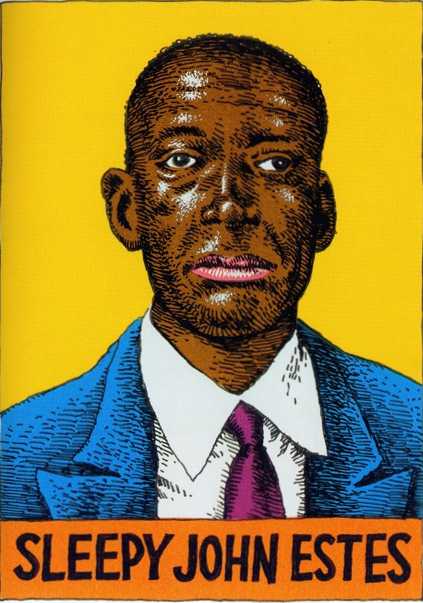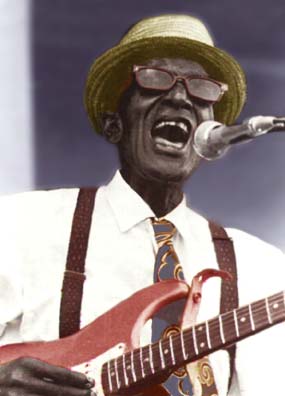
Artwork by the legendary Robert Crumb
June 5: Sleepy John Estes passed away in 1977
It ain’t but the one thing,
That give a man the blues.
He ain’t got no bottom
In his last pair of shoes.
But someday baby,
You ain’t worry my mind any more.
~Someday Baby Blues (trad) first recorded by Sleepy John Estes
Someday Baby Blues (audio):
John Adam Estes (January 25, 1899 – June 5, 1977), is best known as Sleepy John Estes or Sleepy John, he was a blues guitarist, songwriter and vocalist, born in Ripley, Lauderdale County, Tennessee.
From allmusic.com:
Despite the fact that he performed for mixed black and white audiences in string band, jug band, and medicine show formats, his music retains a distinct ethnicity and has a particularly plaintive sound. Astonishingly, he recorded during six decades for Victor, Decca, Bluebird, Ora Nelle, Sun, Delmark, and others. Over the course of his career, his music remained simple yet powerful, and despite his sojourns to Memphis and Chicago he retained a traditional down-home sound. Some of his songs are deeply personal statements about his community and life, such as “Lawyer Clark” and “Floating Bridge.” Other compositions have universal appeal (“Drop Down Mama” and “Someday Baby”) and went on to become mainstays in the repertoires of countless musicians. One of the true masters of his idiom, he lived in poverty, yet was somehow capable of turning his experiences and the conditions of his life into compelling art.
— Barry Lee Pearson
Mailman blues:
Estes made his debut as a recording artist in Memphis, Tennessee in 1929 for Victor Records. He later recorded for the Decca and Bluebird labels, with his last pre-war recording session taking place in 1941. He made a brief return to recording at Sun Studio in Memphis in 1952, recording “Runnin’ Around” and “Rats in My Kitchen”, but otherwise was largely out of the public eye for two decades.
—
Sleepy John Estes had a crying singing style and sounded so much like an old man even on his early records, that blues revivalists reportedly delayed looking for him because they assumed he would have to be long dead.
Sleepy John Estes talks about his life and career (from the album Goin’ to Brownsville):
By the time he was tracked down, by Bob Koester and Samuel Charters in 1962, he had become completely blind and was living in poverty. He resumed touring and recording, reunited with Nixon and toured Europe several times and Japan, with a clutch of albums released on the Delmark Records label.
Album of the day @ JV is this compilation from 1929 to 1941 covering his golden period, The Man Who Cried The Blues:
-Hallgeir & Egil
Sources: Wikipedia, Allmusic, LastFm, Interview on Goin’ to Brownsville album, Archive.org
